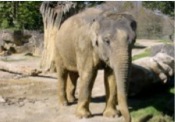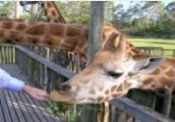Copyright © University of Cambridge. All rights reserved.
'Discuss and Choose' printed from https://nrich.maths.org/
Show menu
Why do this problem?
This activity gives an opportunity to discuss the quantities involved in the statements, and may involve estimation, calculation and/or research. Children will rely not only on what they have learnt from school, but also on information they have picked up from elsewhere. The discussion may well reveal some surprises, particularly in terms of their understanding of different units of measurement.
Possible approach
The activity could be suitable for small group or whole class discussions, depending on the experiences of the children involved. You might find it helpful to print off copies of the printable sheet from the top of the problem page, or you could print a grid of the full set of statements. These can be cut up into separate statements for pupils to focus on one at a time.
Key questions
Possible extension
Children could create their own challenges in a similar way for others to discuss.
Possible support
Try to help by listening, sharing and offering thoughts where appropriate.





